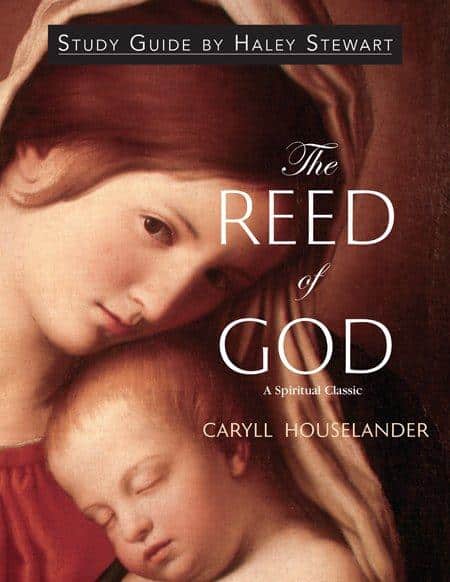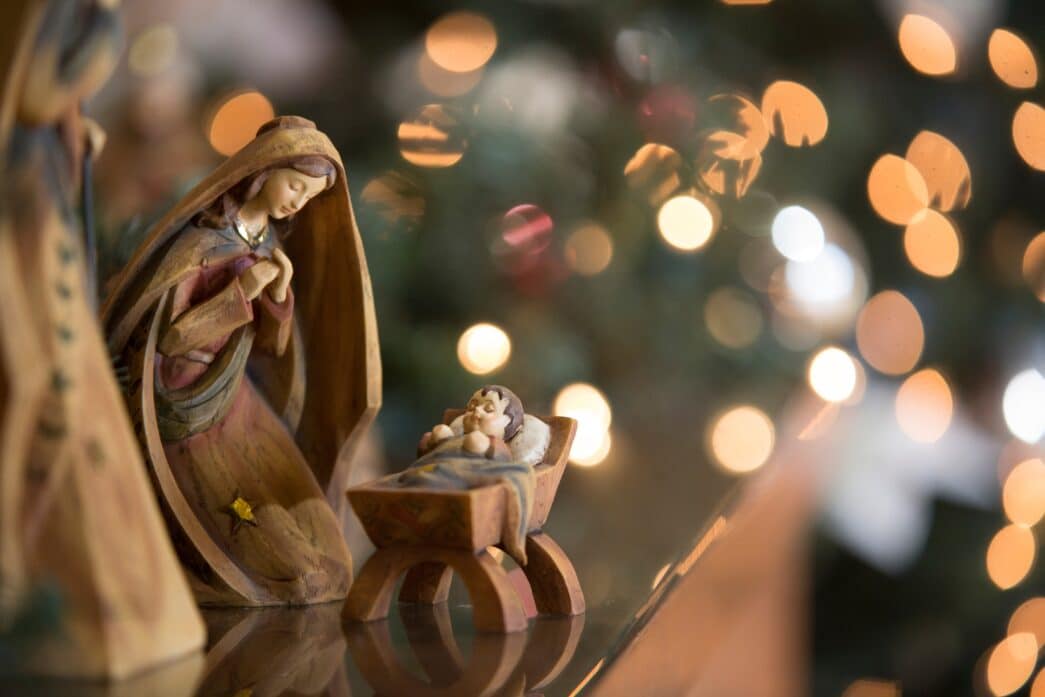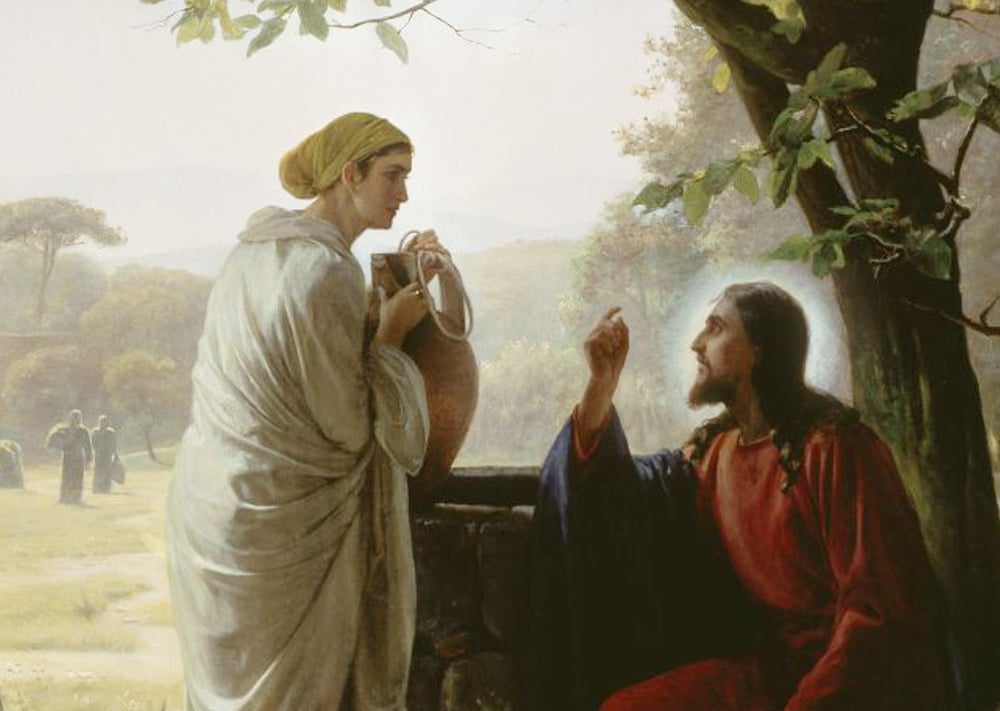Sometimes during Advent as a child, I tried to imagine how Mary felt in the time leading up to Christ’s birth. How she may have gently prepared for the new life within her, whether her mind went back often to the astonishing words of the angel as a sort of reassurance and how it was for her to draw close to Joseph as he took on the role of her spouse and protector.
For many Catholic little girls, Mary is a thing of wonder. Starrily crowned across many cultures and throughout history with her lovely foot crushing the serpent, she is approached by little feet as a mother. They toddle toward her side altar to lay flowers and clutch her beautiful image on holy cards with small, chubby fingers.
Childish musings and wonder can give way to mystery as we get older and the idea of a young woman conceived without sin, bearing the son of God seems so far away from everyday life.
Just ahead of Advent in November, I read The Reed of God by Caryll Houselander in my year of reading one spiritual classic a month. Houselander opens her meditation on the life of the Virgin Mary, originally published in 1944, by reflecting on this distance people feel from the Mother of God.
“To many she is the Madonna of the Christmas card, immobile, seated forever in the immaculately clean stable of golden straw and shining snow,” she wrote. “She is not real. Nothing about her is real, not even the stable in which Love was born.”
What makes us feel distanced from Mary?
Two things about Our Lady, she wrote, make her feel far from us: misconceptions surrounding virginity and difficulty accepting her as human with so little information provided to us about her life.
Misconceptions about virginity abound, she wrote because “there are not only wise virgins in this world, but unwise ones, foolish virgins; and the foolish virgins make more noise in the world than the wise, giving a false impression of virginity by their loveless and joyless attitude to life.”
“Virginity is really the whole offering of soul and body to be consumed in the fire of love and changed into the flame of its glory,” she wrote. “The virginity of Our Lady is the wholeness of Love through which our own humanity has become the bride of the Spirit of Life.”
As for Mary’s humanity, Houselander wrote that “she is not only human; she is humanity. The one thing that she did and does is the one thing that we all have to do, namely, to bear Christ into the world.”
Houselander argued that the lack of detail we have regarding the life of Mary is an advantage because “if we had a picture of Our Lady‘s personality we might be dazzled into thinking that only one sort of person could form Christ in himself, and we should miss the meaning of our own being” as “Christ must be born from every soul, formed in every life.”
And so, “nothing but things essential for us are revealed to us about the Mother of God: the fact that she was wed to the Holy Spirit and bore Christ into the world. Our crowning joy is that she did this as a lay person and through the ordinary daily life that we all live.”

Houselander goes on to reflect that there is a “virginal quality” of emptiness that is not formless and without meaning, but has “a shape, a form given to it by the purpose for which it is intended.” This emptiness is like the hollow in a reed made to receive the piper’s song, like a cup made to hold wine or a nest shaped to receive a baby bird.
Mary, she wrote, was a “reed through which the Eternal Love was to be piped as a shepherd’s song” and a “flowerlike chalice” open to receive “the purest water of humanity” mingled with wine, “changed to the crimson blood of love, and lifted up in sacrifice.” She was “the warm nest rounded to the shape of humanity to receive the Divine Little Bird.”
She challenged the reader to ask themselves, “in what way are we to fulfill the work of giving Christ life in us? Are we reed pipes? Is he waiting to live lyrically through us? Are we chalices? Does He ask to be sacrificed in us? Are we nests? Does He desire of us a warm, sweet abiding in domestic life at home?”
Ultimately, she wrote “whatever we are gives form to the emptiness in us which can only be filled by God and which God is even now waiting to fill.”
The season of “humility, silence, and growth”
Houselander called Advent “the season of humility, silence, and growth” as Mary experienced Christ forming within her as she went about her daily life.
There are advents in our own lives — both liturgical and connected to periods of waiting and suffering — when “we shall not see Christ’s radiance in our lives yet; it is still hidden in our darkness; nevertheless, we must believe that He is growing in our lives; we must believe it so firmly that we cannot help relating everything, literally everything to this most incredible reality.”
When the angel came to her and Mary gave her “yes,” it was a yes for us all. “We are all asked if we will surrender what we are, our humanity, our flesh and blood, to the Holy Spirit,” she wrote, and this surrender that is asked of us includes “complete and absolute trust; it must be like Our Lady’s Surrender, without condition and without reservation.” It means “trusting that whatever God does with you and with yours is the act of an infinitely loving Father.”
Mary’s trust extended from her first “yes” to the very foot of the Cross.
“At that moment, when Our Lady received the Love of the Holy Spirit as the wedded love of her soul, she also received her dead son in her arms,” she wrote. “The trust which accepted the utter sweetness of the Infant Jesus between her own hands, looking at her with her own eyes, accepted the stiff, unresponsive corpse that her hands embalmed.”
How many mothers could imitate this example of Mary who was “able to see her boy killed, lying there bruised from head to foot, wounded and dead and to believe the Father’s cry: ‘This is my beloved son in whom I am well pleased.'”
Houselander wrote in England amid the concerns and anxieties of the Second World War. In the face of the concerns and anxieties in this season of Advent 80 years later, her words draw us to following in the path of the Mother of God, our mother, whose first “yes” to God ushered in the light and hope of Christmas and, ultimately, the triumph over suffering and death at Easter.








